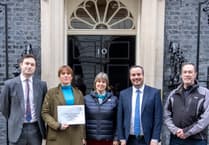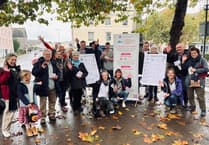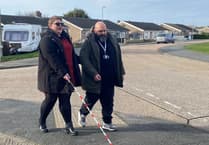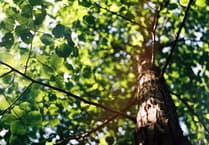SLAPTON'S defibrillator saved the life of well-known naturalist, author and broadcaster Tony Soper last year.
Slapton resident David Murphy got in touch after reading the piece about defibrillators in the Kingsbridge & Salcombe Gazette to tell us about Tony's story. He called Tony 'living proof of the value of having locally based defibrillators freely available'.
Tony suffered a sudden cardiac arrest on the morning of Tuesday, August 19, last year at his home in Slapton. He was unconscious, not breathing and without a pulse.
His wife Hilary called her son Tim before dialling 999, and Tim, an experienced first-aider through his work as an expedition leader, was able to quickly start CPR, or cardiopulmonary resuscitation, which involves mouth-to-mouth breathing and chest compressions.
Meanwhile, Tim's wife Linnea – dubbed the 'blonde streak' due to the speed at which she raced through the village – ran to the Slapton Ley Field Centre to collect the village defibrillator. Tim applied the pads, the defibrillator calculated that a shock was required, and so Tim pressed the button to administer it.
At the first shock, Tony's heart restarted and he began breathing again. Tim and Linnea kept his airway open until Graham Simmons, the community first responder, alerted by the 999 call, arrived and was able to further assist with oxygen.
Devon Air Ambulance, also triggered by the 999 call, arrived over the village and was able to land on the field alongside the Slapton Field Centre. The road ambulance arrived shortly afterwards and, once Tony had been stabilised, transferred him to the air ambulance, which airlifted him directly to Derriford Hospital.
Following surgery, which included having an internal mini-defibrillator implanted, and some weeks in hospital Tony has now recovered and can be encountered most days in the village taking progressively longer walks to rebuild his strength.
This was the first deployment in earnest of Slapton's defibrillator and it proved conclusively the value of its presence in the village. Its availability that day was due in the main to the energy and persistence of Chrissie Knight, who the year before had recognised the importance of such a resource and set about raising the funds.
It cost around £1,500, including installation,
and was co-funded by the parish council and Slapton Amateur Productions. Chrissie negotiated a location and arranged for the Ambulance Service to provide the necessary training.
The defibrillator will have its best chance of assisting in future emergencies if it is used in conjunction with first-aiders who are able to respond quickly and are capable of administering CPR.
While the defibrillator itself requires no training and very little human intervention, CPR can increase dramatically the chances of survival, especially if administered immediately while waiting for the defibrillator to reach the casualty.
The Ambulance Service provides effective, free training on request, and 20-plus Slapton residents have received training so far. The location of the defibrillator – in the front porch of the Slapton Ley Field Centre – has also been publicised in the village magazine and on notices throughout the village. This location means that it is available at any time, 365 days a year.
To quote the notice that Tony's family placed in Slapton Lines, the village magazine: 'Hilary, Tim, Jack and the family would like to thank all those who assisted, particularly the medical service personnel, staff at the Field Centre, and the Devon Air Ambulance, which arrived before the land ambulance and was able to transport Tony much more quickly to hospital.
'Most importantly they would like to thank those responsible for the presence of the village defibrillator, which was undoubtedly instrumental in saving Tony's life.'



